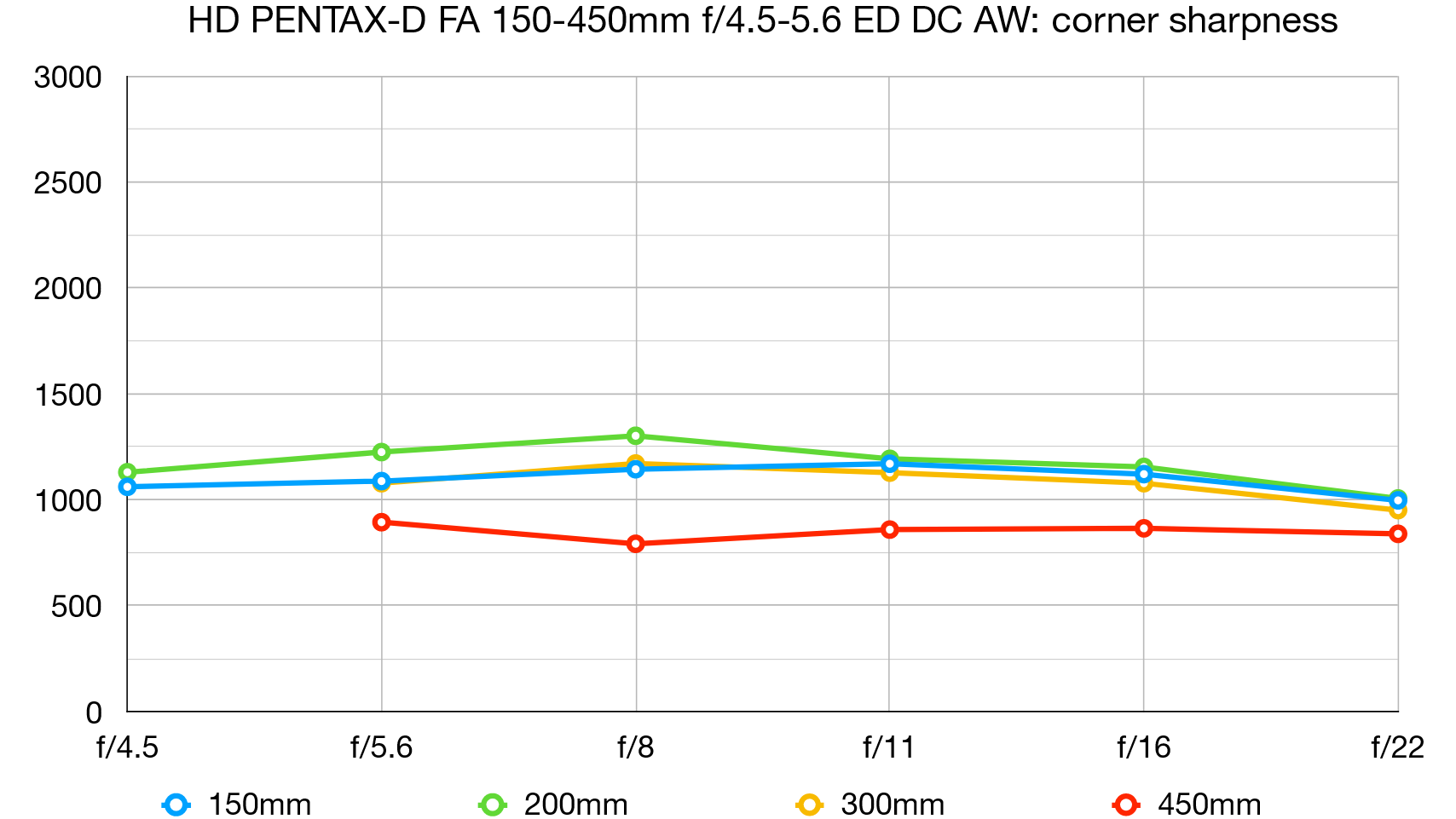Digital Camera World Verdict
This super-tele zoom gives powerful reach on a full-frame camera, even more so on Pentax’s APS-C format body, equivalent to 225-675mm. It has solid build quality and although it’s weighty at 2,000g, isn’t much heavier than Pentax’s 70-200mm f/2.8 zoom. It’s a good performer overall but loses out to the likes of Sigma and Tamron 150-600mm for autofocus speed and telephoto reach, as well as lacking optical image stabilization.
Pros
- +
Strong build quality
- +
Good handling characteristics
- +
Weather-sealed constructions
Cons
- -
Sharpness could be better
- -
Pedestrian autofocus system
- -
No optical stabilization
Why you can trust Digital Camera World
The HD PENTAX-D FA 150-450mm f/4.5-5.6 ED DC AW is an attractive proposition. There are often times when we can’t get as close as we’d like. If you’re shooting anything from small timid birds to planes at an air show, from athletes to motor sports, or wildlife on safari, you’ll need a lens that really covers the distance. A super-telephoto lens will get you there, and a zoom beats a prime for flexibility when your movements are limited. That’s especially true if you’re confined to a hide for shooting wildlife, or in a spectators’ area at a sporting event.
Specifications
Mount: Pentax K
Full frame: Yes
Autofocus: Yes
Stabilization: No
Lens construction: 18 elements in 14 groups
Angle of view: 16.5-5.5 degrees
Diaphragm blades: 9
Minimum aperture: f/22-27
Minimum focusing distance: 2.0m
Maximum magnification ratio: 0.22x
Filter size: 86mm
Dimensions: 95x242mm
Weight: 2,000g
Key features
Pentax designed this full-frame compatible lens at a time when it only made APS-C format DSLRs. The decision came good with the subsequent launch of Pentax’s full-frame DSLRs. Naturally, you can also use the lens on APS-C format cameras, with an effective boost in telephoto stretch.
There’s plentiful autofocus finery with both auto and manual priority ‘Quick Shift’ modes, plus an AF preset facility and four customizable buttons around the middle of the lens. These can be configured to act as AF-on or AF-hold buttons, or to select a previously stored focus distance. There’s also a range limiter that works either side of six meters.
Other attractions include a tough, weather-sealed construction, HD coatings to improve light transmittance and reduce ghosting and flare, and a ‘super protect’ coating on the front element. One SLD (Super Low Dispersion) element is fitted, along with three ED (Extra-low Dispersion) elements.
Performance
Based on a built-in DC motor, autofocus speed is a little pedestrian compared with most competing lenses on the market. Sharpness drops off rather noticeably at the long end of the zoom range - a situation that isn’t helped by the lens’s reliance on in-camera stabilization, which can lack effectiveness with lenses that have long focal lengths.
Lab results
We run a range of lab tests under controlled conditions, using the Imatest Master testing suite. Photos of test charts are taken across the range of apertures and zooms (where available), then analyzed for sharpness, distortion and chromatic aberrations.
We use Imatest SFR (spatial frequency response) charts and analysis software to plot lens resolution at the center of the image frame, corners and mid-point distances, across the range of aperture settings and, with zoom lenses, at four different focal lengths. The tests also measure distortion and color fringing (chromatic aberration).
Sharpness:
Levels of sharpness are a little lackluster compared with most super-telephoto zoom lenses, throughout the zoom range, as well as dropping off further at the long end.
Fringing:
Slight color fringing can be noticeable across the whole image frame and throughout the entire zoom range, becoming worse towards the corners at the long end.
Distortion:
The best camera deals, reviews, product advice, and unmissable photography news, direct to your inbox!
There’s slight pincushion at all focal lengths but it decreases a little at the long end of the range.
Verdict
This super-tele zoom gives powerful reach on a full-frame camera, even more so on Pentax’s APS-C format body, equivalent to 225-675mm. It has solid build quality and although it’s weighty at 2,000g, isn’t much heavier than Pentax’s 70-200mm f/2.8 zoom. It’s a good performer overall but loses out to the likes of Sigma and Tamron 150-600mm for autofocus speed and telephoto reach, as well as lacking optical image stabilization.
Read more:
• Best camera lenses to get
• Best Canon lenses
• Best Nikon lenses
• Best Sony lenses
Matthew Richards is a photographer and journalist who has spent years using and reviewing all manner of photo gear. He is Digital Camera World's principal lens reviewer – and has tested more primes and zooms than most people have had hot dinners!
His expertise with equipment doesn’t end there, though. He is also an encyclopedia when it comes to all manner of cameras, camera holsters and bags, flashguns, tripods and heads, printers, papers and inks, and just about anything imaging-related.
In an earlier life he was a broadcast engineer at the BBC, as well as a former editor of PC Guide.






